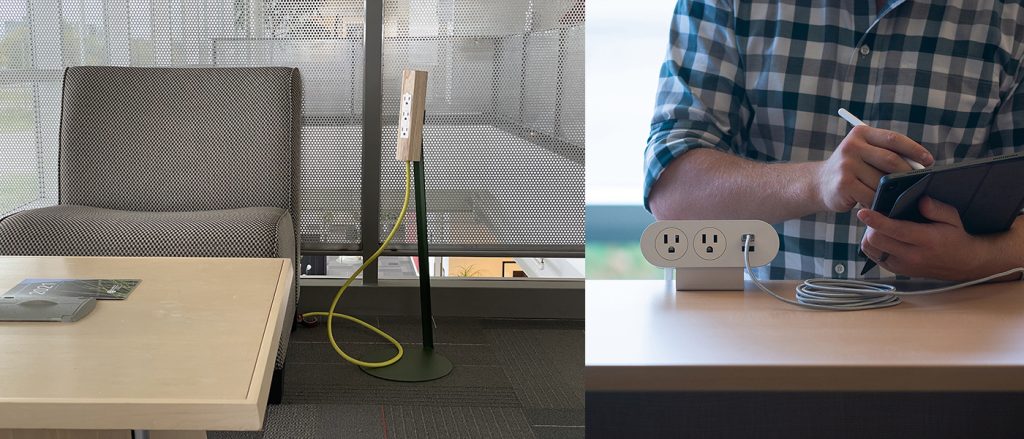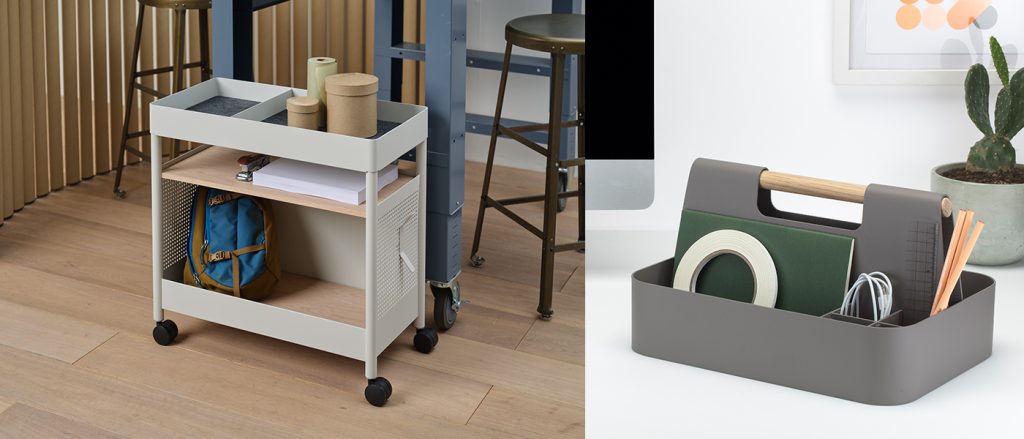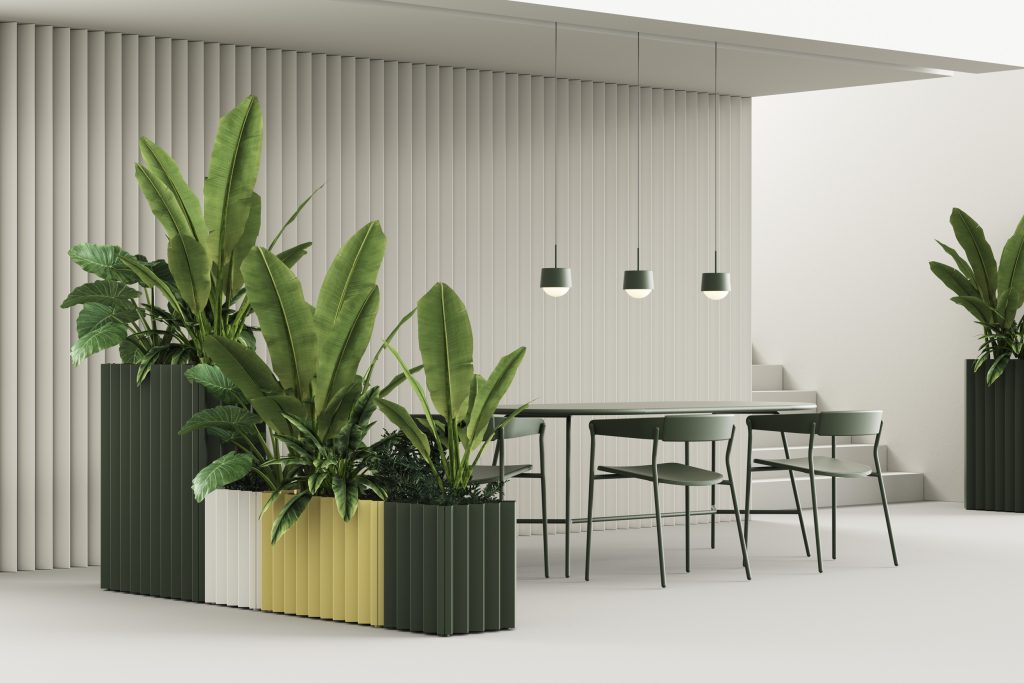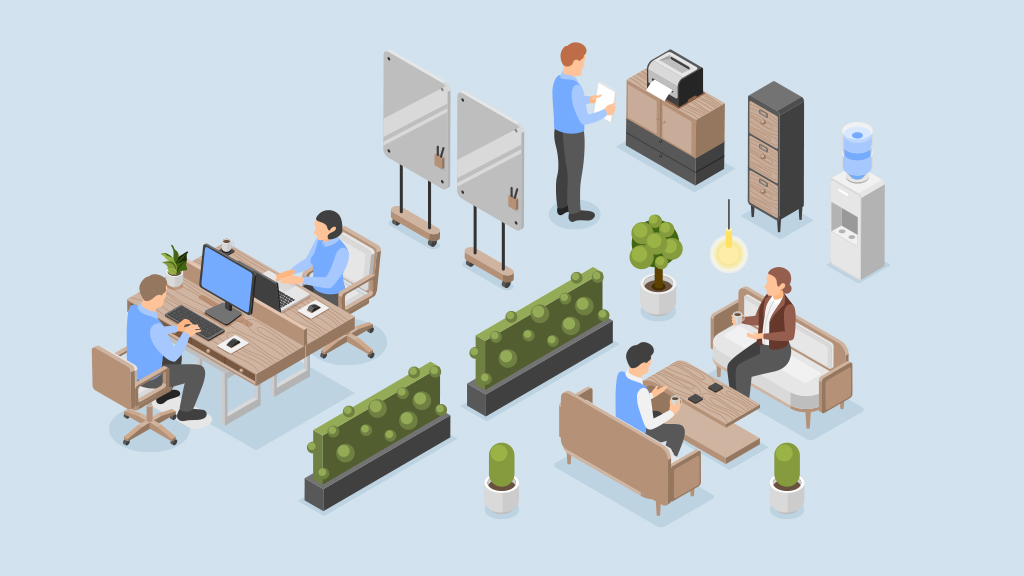The hybrid work model has significantly changed how we use office space. With the average square footage continuing to shrink to account for the drop in in-office attendance, another type of space has seen an increase in demand — the agile workspace.
Agile workspaces are intentionally designed areas that can accommodate a variety of work modes, including focus work, collaboration, learning, and socializing. Since these areas must multi-task across such diverse activities, they must be designed to be flexible and reconfigurable.
Why are agile workspaces so popular? It’s all about giving employees a choice. According to the 2024 Global Workplace Survey, having a palette of space types available is a crucial factor in high-performing workplaces. By offering employees the choice of where they do their work within the office beyond their assigned workstation or enclosed meeting rooms, you empower them to choose the most effective spaces for their tasks.
If you’re creating an agile workspace from scratch and have a healthy budget to accomplish this, great! Tight budgets are the norm currently, so if you’re re-purposing a space on a shoestring, consider the following list of our bare-bones essentials. The good news is that an agile space doesn’t have to be pretty but needs to be functional. Follow along for our take on creating a flexible workspace that performs.
Essential #1: A quiet refuge
The lack of privacy and concentration remains one of the most referenced pain points experienced within the open-plan office environment. While open plans have afforded better collaboration and innovation, there’s still significant demand for a place to think free from interruptions or take a private phone call. Acoustic pods are an ideal solution that satisfies both. Consider including these phone-booth style pods along the perimeter of agile zones to provide a haven for deep focus work or a private conversation.
Essential #2: Furniture that moves easily
The agile workspace shines as a destination for collaboration or informal meetings. Lightweight tables and stacking chairs (bonus if they’re on casters) allow for effortless reconfiguration to host groups from two to a dozen. Include collaboration tools like mobile whiteboards and rolling digital displays to facilitate communication within in-office and remote teams.
Essential #3: A cozy corner
Casual, soft furnishings can foster connection and team building or offer a spot to recharge with its living room vibes. Adding side tables, poufs, and ottomans can increase the versatility and establish this alcove as a destination for small breakout sessions or informal meetings. These social spaces are best placed in the corner of an agile space to capitalize on its two structural walls that help to create a sense of intimacy.
Essential #4: Power and charging access
Since we can now work anywhere, power must be everywhere. Power and charging access are a must-have to keep laptops and mobile devices fueled, and colleagues connected. Freestanding power docks or PDUs mounted to or within furniture are essential to making every niche within the agile zone equipped for productivity beyond a device’s battery life.

Essential #5: Adaptable lighting
We’re big believers in using light to cue the mood or signal what should happen within an environment. Since agile areas must cater to a range of activities, the lighting must be able to conform as needed. Instead of relying on ceiling fixtures alone, we suggest a layered approach. A combination of natural light and dimmable task lighting can set the stage for the work that needs to be done. Lamps with a full range of touch-controlled illumination can support everything from document-based tasks to social gatherings where lighting plays an ambient, supportive role.
Essential #6: Tools that support quick changes
Accessories are more than just frivolous extras — they make a difference in how functional and organized these zones can be. Think wheeled storage carts to store project files, refreshments, or handy caddies to corral supplies like sticky notes, dry-erase markers, and notepads. Functional accessories like these allow the work area to pack up and transform quickly to host a different project or group.

Essential #7: Add some life
Finally, don’t forget to incorporate plants and foliage into the layout. Plants not only benefit employee well-being by purifying the air and relieving stress and anxiety, but they also stimulate creativity. In addition to its acoustic benefits, large-scale greenery can serve as living architecture. You can subtly carve out defined niches within the agile space by pairing oversized vegetation with larger planters.

Agile workspaces foster a more productive and high-performing office with engaged employees who have an agency over where they do their jobs. This multi-tasking destination is equipped to handle everything from a fruitful brainstorming session to a quiet, individual study by selecting furnishings, fixtures, and accessories that promote flexibility and quick reconfiguration. /

